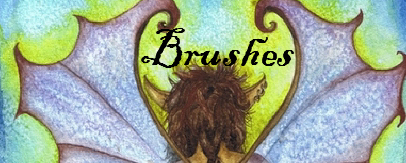2006-04-13 16:03:31
|
# of watchers: 1
|
Fans: 0
| D20: 5 |

When working in watercolor, the brushes you use are vital tools that should be selected with care. It is important that you understand the types available, the range of sizes, and their intended uses.
Sable and other natural-hair brushes tend to be the most expensive. Other types of hair come from squirrel, goat, camel, ox, and hog, etc. On the other end of the bristle spectrum are the synthetic and natural-synthe
tic fibers. All possess their own strengths and offer unique qualities. Who says pianting doesnt hurt anything! (if you want to know more about that ask)
Round brushes produce a variety of strokes from thin lines (using the tip) to medium washes (using the edge of the brush). These types of brushes generally range in size from 00 (the smallest) to 16 (the largest). Blunt rounds are formed with shorter hairs that culminate in a blunt tip. These types of brushes cannot produce the fine lines of a regular round but are instead effective for laying in washes and working wet-on-wet. The smallest are the best for doing the detailed works.
Flat brushes have long, soft hairs that form a square-tipped edge that is suitable for producing crisp, hard-edged strokes. These can hold large amounts of paint and are effective for creating broad, sweeping strokes and background washes. They are also good for blending colours. Normal brush sizes range from 1/4" to 3" wide.
Oval and filbert brushes are flat with a rounded tip that is good for producing blunt, soft-edged strokes. These types of brushes can hold a fair amount of paint and are also suitable for small washes of colour.
But once again try them out for your self, have a play and have fun.
Back to The Art of Watercolour
| Show these comments on your site |
 Stumble!
Stumble!